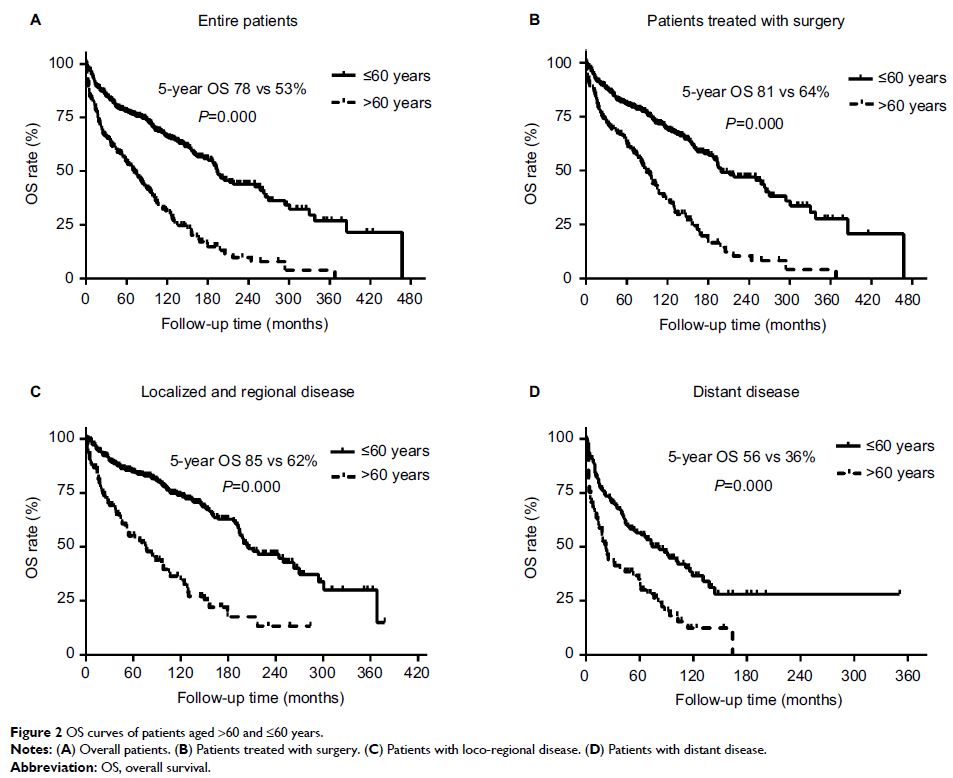108985
论文已发表
注册即可获取德孚的最新动态
IF 收录期刊
- 3.4 Breast Cancer (Dove Med Press)
- 3.2 Clin Epidemiol
- 2.6 Cancer Manag Res
- 2.9 Infect Drug Resist
- 3.7 Clin Interv Aging
- 5.1 Drug Des Dev Ther
- 3.1 Int J Chronic Obstr
- 6.6 Int J Nanomed
- 2.6 Int J Women's Health
- 2.9 Neuropsych Dis Treat
- 2.8 OncoTargets Ther
- 2.0 Patient Prefer Adher
- 2.2 Ther Clin Risk Manag
- 2.5 J Pain Res
- 3.0 Diabet Metab Synd Ob
- 3.2 Psychol Res Behav Ma
- 3.4 Nat Sci Sleep
- 1.8 Pharmgenomics Pers Med
- 2.0 Risk Manag Healthc Policy
- 4.1 J Inflamm Res
- 2.0 Int J Gen Med
- 3.4 J Hepatocell Carcinoma
- 3.0 J Asthma Allergy
- 2.2 Clin Cosmet Investig Dermatol
- 2.4 J Multidiscip Healthc

嗅神经母细胞瘤的年龄分布和年龄相关疗效:基于人群的分析
Authors Yin ZZ, Wang YY, Wu YM, Zhang XM, Wang FM, Wang PG, Tao Z, Yuan ZY
Received 18 September 2017
Accepted for publication 12 February 2018
Published 29 May 2018 Volume 2018:10 Pages 1359—1364
DOI https://doi.org/10.2147/CMAR.S151945
Checked for plagiarism Yes
Review by Single-blind
Peer reviewers approved by Dr Amy Norman
Peer reviewer comments 2
Editor who approved publication: Professor Kenan Onel
Objective: The
objective of the study was to describe the age distribution and to evaluate the
role of prognostic value of age on survival in patients diagnosed with
olfactory neuroblastoma (ONB). A population-based retrospective analysis was
conducted.
Materials and
methods: The population-based study of
patients in the Surveillance, Epidemiology, and End Results (SEER) tumor
registry, who were diagnosed with ONB from 1973 to 2014, were retrospectively
analyzed.
Results: The cohort included 876 patients with a median age of
54 years. There was a unimodal distribution of age and ONBs most
frequently occurred in the fifth to sixth decades of life. Kaplan–Meier
analysis demonstrated overall survival (OS) and cancer-specific survival (CSS)
rates of 69% and 78% at 5 years. Multivariable Cox regression analysis showed
that age, SEER stage, and surgery were independent prognostic factors for CSS.
The risk of overall death and cancer-specific death increased 3.1% and 1.6% per
year, respectively. Patients aged >60 years presented significantly
poor OS and CSS compared with patients aged ≤60 years, even in patients
with loco-regional disease or in those treated with surgery.
Conclusion: This study highlights the growing evidence that there is a
unimodal age distribution of ONB and that age is an important adverse
prognostic factor.
Keywords: olfactory neuroblastoma, esthesioneuroblastoma, age distribution,
prognosis
